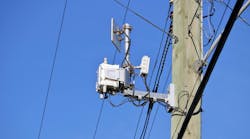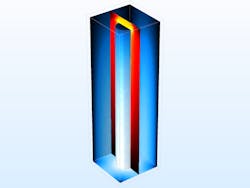Designing Cavity Filters for the 5G Network (.PDF Download)
The impending 5G network has created a race for new spectrum bands to accommodate wireless traffic. As smartphone technology continues to offer more complex solutions, the need to transmit and receive paths from a variety of sources requires multiple bands operating simultaneously through a single antenna or multiple-input, multiple-output (MIMO) systems.
Microwave cavity filters are utilized to get rid of unwanted frequency components. They are found in telecommunication infrastructures that handle signals ranging from tens of megahertz to several gigahertz.
A filter’s performance may vary under severe environmental conditions. For example, a drastic rise in temperature can result in structural deformation caused by unexpected heat expansion. The physical phenomena beyond electromagnetics (EM) may not be included in a conventional EM simulation, as well as indoor laboratory measurements, despite having a large impact on the final product.
Resonance Frequency Changes Due to Thermal Drift
When a cavity filter is built with metallic materials, its performance in terms of resonant frequency can be vulnerable to severe temperature fluctuations. High-power loads or harsh environmental conditions can result in thermal drift, which makes it difficult to stabilize the high frequency of the filter. However, with the help of multiphysics simulation, it can be easy to analyze the resonant frequencies of an arbitrary shape of a structure through an eigenfrequency study.
1. This is a slice plot of electric field norm and surface plot of surface current density norm.










